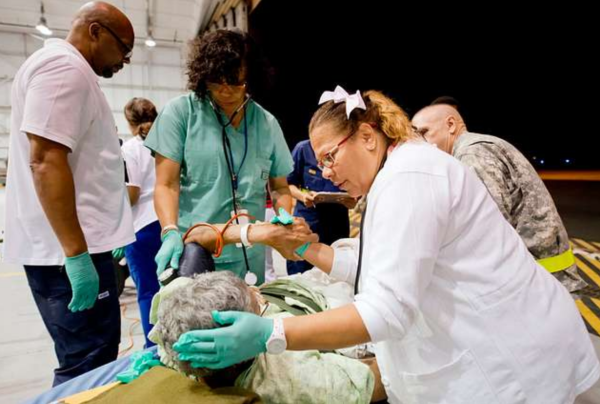As things change across the world and medical knowledge grows constantly, scientists are always discovering new problems and finding ways to fix them. News reports seem to show a new healthcare crisis everyday, which pushes people to panic. Scientists have gotten good at preparing for the worst, and in the process have come up with new and advanced ways of saving lives.
One issue that worries healthcare researchers is global warming. As natural disasters destroy homes and ruin lives, many are killed or end up with long term health conditions. In the past year, there have been 568 deaths resulting from extreme weather conditions in the United States, which compels officials to work hard at preventing such incidents.
So far the best system has been the Natural Disaster Medical System, (NDMS) which is a group that works to respond to disasters efficiently. The NDMS has three components that make medical assistance easier in situations where time is limited: they provide supplies, transport affected victims to an area where they can get care, attend to the victims in a safe and unaffected area, and deploy Federal Intermittent Employees–civilians that are federalized when local authorities need it. Federalized civilians are usually medical or veterinary staff who serve as expected-service employees, and only get deployed when NDMS deems it necessary.

In addition to the rise of natural disasters, the warming global climate is making disease a bigger issue. Known viruses are mutating and adapting to become more dangerous, and new viruses are emerging with the ability to cause extreme damage. Scientists are working ahead to try and stop the possible catastrophic results.
Officials have put vast resources into studying “zombie viruses,” which are viruses that have been inactive and encased in ice for a long time. As temperatures warm, researchers expect that these viruses will soon be introduced to the general population, pushing them to discover as much as they can about these unknown illnesses as possible. They want to discover how long the disease can last once out of the ice, leading them to revive the viruses ahead of time by thawing them and studying the way they interact with different organisms, as the last thing they want is another pandemic that devastates the world.
To go along with the theorized “zombie virus epidemic,” scientists are working to prevent a disease that doesn’t even exist yet. Governments around the world are working to prepare for the unknown, and come up with ideas on how to save lives and stop the spread of a new illness.

Disease X is a placeholder for a disease that may exist in the future (or exists now) but hasn’t reached its deadly potential yet. Examples of what Disease X could be are things like Bird Flu, which has just killed its first human victim, a new strain of COVID, Ebola virus, Marburg virus, or something that hasn’t yet been identified. COVID-19 was actually considered a Disease X at the end of 2019, as it had yet to become widespread and officials didn’t know if it would spread worldwide or not. Disease X is a concept that’s been around since 2018, and has gained more attention in the past few months because of its relevance being stronger than ever.
As our world continues to change and our knowledge continues to grow, it’s interesting to see how the medical world will continue to adapt as our circumstances change. There are always new problems for scientists to solve and new ideas that could change the future of healthcare, but what remains unknown is just a challenge the world will have to face next.




























